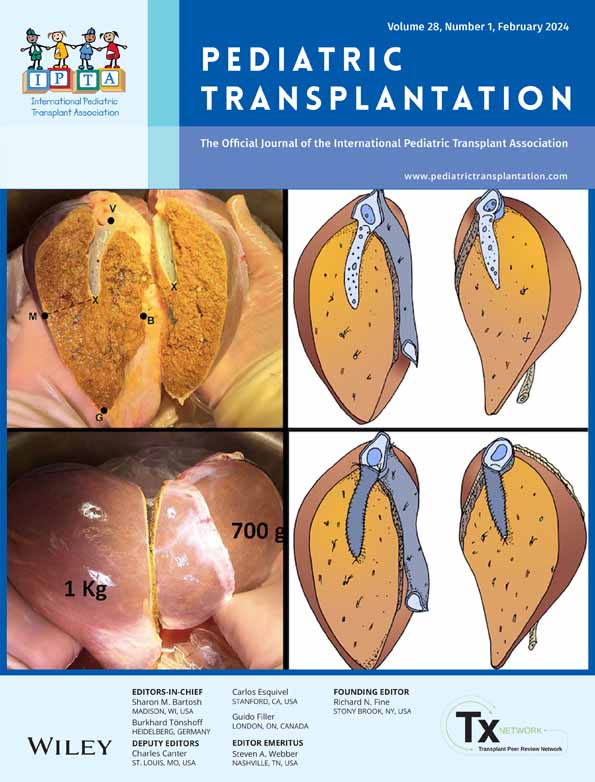Outcomes of pediatric deceased donor kidney transplant in northeast Thailand
Abstract
Background
Kidney transplantation (KT) is the best therapy in children with end-stage renal disease (ESRD), however, improving long-term graft survival remains challenging. The aim of this study was to determine graft survival and potential risk factors in pediatric patients who undergo deceased donor KT with a steroid-based regimen.
Methods
The medical records of children who underwent their first deceased donor KT in Srinagarind Hospital (Khon Kaen, Thailand) between 2001 and 2020 were reviewed.
Results
Seventy-two patients were studied. Male adolescents were the predominant recipients and the majority of donors were young adult males. Non-glomerular disease, particularly hypoplastic/dysplastic kidney disease, was the major cause of ESRD (48.61%). The mean cold ischemic time (CIT) was 18.29 ± 5.29 h. Most of the recipients had more than 4 human leukocyte antigen (HLA) mismatched loci with positive HLA-DR mismatch (52.78%). Induction therapy was administered in 76.74% of recipients. Tacrolimus plus mycophenolate sodium and prednisolone was the most common immunosuppressive maintenance regimen (69.44%). Graft failure occurred in 18 patients, mostly due to graft rejection (50%). Graft survival at 1, 3, and 5 years after KT were 94.40%, 86.25%, and 74.92%, respectively. The only significant risk factor of graft failure in this study was delayed graft function (DGF) (adjusted HR = 3.55; 95%CI: 1.14, 11.12; p = .029). Patient survival at 1, 3, and 5 years was 100%, 98.48%, and 96.19%, respectively.
Conclusion
The short-term outcomes of pediatric KT from deceased donors were satisfactory; however, prevention of DGF would result in better outcomes.
CONFLICT OF INTEREST STATEMENT
The authors have no conflict of interest to declare.
Open Research
DATA AVAILABILITY STATEMENT
The data that support the findings of this study are available on request from the corresponding author. The data are not publicly available due to privacy or ethical restrictions.




